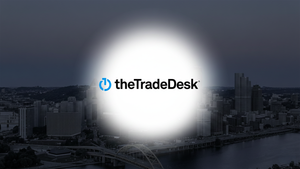
October 27, 2025 – In a pivotal statement released today, Andrew Forson, President of DeFi Technologies Inc. (NEO: DEFI) and Chief Growth Officer of Valour, declared that "the line between TradFi and DeFi will be blurred." This assertion, made in an exclusive interview with CryptoNews, signals a profound shift underway in the global financial landscape, where the once-distinct worlds of traditional finance and decentralized finance are rapidly converging.
Forson's vision underscores a future shaped by evolving regulation, insatiable investor appetite, and relentless innovation in capital markets. DeFi Technologies, a key player in this integration, is actively bridging this gap by offering regulated, exchange-traded products (ETPs) that "wrap digital assets," enabling traditional investors to access the burgeoning crypto market through familiar channels. This strategic approach by firms like DeFi Technologies is not just a trend but a fundamental re-architecture of financial systems, paving the way for unprecedented liquidity, efficiency, and accessibility in the crypto ecosystem.
Market Impact and Price Action
The convergence of TradFi and DeFi, as highlighted by Forson, has already exerted a significant influence on crypto market dynamics, with a notable impact on token prices, trading volumes, and liquidity. While Forson's statement is fresh, it echoes and reinforces broader trends observed throughout 2024 and 2025.
Major cryptocurrencies like Bitcoin (BTC) and Ethereum (ETH) have seen substantial price appreciation, largely catalyzed by increased TradFi involvement. The approval and launch of Spot Bitcoin Exchange-Traded Funds (ETFs) in 2024, for instance, propelled Bitcoin to a 60% price increase within two months. Institutional capital is now providing crucial support levels, with analysts projecting Bitcoin to reach $135,000-$145,000 by year-end 2025, fueled by sustained inflows. Similarly, Ethereum has experienced a surge in trading volumes as DeFi platforms increasingly interface with traditional lending, with ETH crossing $4,300 in August 2025. The anticipated approval of Spot Ethereum ETFs is expected to further drive its price.
Beyond the giants, major DeFi tokens and integrated assets are also thriving. The combined market capitalization of the top 100 DeFi tokens saw a 38% increase year-over-year by Q2 2025. Tokens tied to Real-World Assets (RWAs) are gaining significant traction, attracting increased trading volumes and potential price appreciation as TradFi seeks tokenized securities. A prime example of immediate market reaction to institutional news was Fidelity's announcement in October 2025, enabling clients to trade and custody Solana (SOL), which resulted in an immediate 5-5.15% daily price rally for SOL and a surge in trading activity.
Trading volumes across the crypto market have seen a substantial boost. Decentralized Exchanges (DEXs) have witnessed perpetual trading volumes surge past $1 trillion for two consecutive months in October 2025, reflecting a migration of trading activity from centralized platforms. Overall, the Total Value Locked (TVL) across all DeFi protocols reached $123.6 billion in 2025, a 41% year-over-year increase, with institutional capital injections significantly enhancing market liquidity and reducing price volatility. Ethereum continues to dominate, hosting 63% of all protocols and over $78.1 billion in TVL, partly due to regulatory clarity around liquid staking tokens.
Community and Ecosystem Response
The crypto community's response to the blurring lines between TradFi and DeFi is a tapestry of enthusiasm, cautious optimism, and a degree of skepticism. While many celebrate the influx of institutional capital and regulatory clarity as a validation of blockchain technology and a pathway to mainstream adoption, others remain vigilant about the potential erosion of decentralization.
Social media platforms like X (formerly Twitter) and Reddit are abuzz with discussions, often reflecting excitement when major financial institutions like BlackRock or Fidelity make significant moves into the crypto space. Crypto influencers frequently highlight these developments as crucial milestones, emphasizing the legitimacy and growth they bring to the broader Web3 ecosystem. The institutional "bets" on assets like Ethereum are seen as powerful endorsements, driving positive sentiment and engagement.
However, a vocal segment of "decentralization maximalists" expresses concerns that increased institutional involvement could lead to greater centralization of control, potentially compromising the core ethos of DeFi. They also worry that stricter regulatory oversight, while necessary for adoption, might stifle innovation or impose restrictive frameworks that deviate from the permissionless nature of early DeFi. Despite these apprehensions, the prevailing view is that convergence is inevitable, leading to hybrid models that aim to balance the best of both worlds. Projects like Aave Arc are already creating permissioned DeFi pools for institutions, offering KYC-compliant lending and showcasing practical hybrid solutions.
The impact on related DeFi protocols, NFT projects, and Web3 applications is profound. Existing DeFi protocols are evolving to integrate real-world compliance requirements, such as whitelisting wallets and identity layers. The tokenization of real-world assets (RWAs) is a major driver, providing stable collateral and real-world cash flows on-chain, unlocking new liquidity and investment opportunities for financial institutions. While NFT projects are less directly impacted than DeFi, the broader institutional embrace of blockchain, particularly Ethereum, reinforces its foundational technology, benefiting the entire Web3 space. This convergence is ultimately accelerating the integration of digital assets into the global financial ecosystem, fostering a more efficient, transparent, and globally accessible infrastructure for all Web3 applications.
What's Next for Crypto
The period following October 27, 2025, is poised for an accelerated convergence of TradFi and DeFi, bringing significant short-term and long-term implications for the crypto market. In the immediate future, we can anticipate increased market liquidity and stability, driven by continued institutional capital inflows, particularly through regulated products like Spot Ethereum ETFs. This will likely lead to the rollout of more sophisticated crypto products, including structured products and derivatives, catering to a wider investor base. Stablecoins, bolstered by regulatory clarity like the U.S. GENIUS Act (signed into law July 2025), will solidify their role as a crucial bridge, with their market size projected to double to $400 billion by the end of 2025.
Looking further ahead, blockchain technology is expected to become a core infrastructure for global finance, modernizing operations across cross-border payments and asset management. The tokenization of Real-World Assets (RWAs) will be a cornerstone, with the market for tokenized RWAs projected to reach $16 trillion by 2030, unlocking unprecedented liquidity for traditionally illiquid assets. This will culminate in a truly hybrid financial ecosystem, where digital assets are recognized as a legitimate, strategic asset class, combining the stability and capital of traditional finance with the efficiency and transparency of decentralized systems.
Several catalysts will drive this convergence. Ongoing regulatory clarity, such as the EU's MiCA regulation (expected by 2024) and the U.S. GENIUS Act, is building confidence among financial institutions. Technological advancements in Layer 2 scaling solutions and cross-chain interoperability will enhance blockchain capacity and reduce costs, making them more attractive for enterprise adoption. Institutional adoption, fueled by Spot ETFs, corporate treasury bets, and major banks exploring blockchain services, will continue to legitimize and integrate digital assets into mainstream finance. For projects, strategic considerations include prioritizing compliance, focusing on real-world utility and tokenization, and actively building bridges with TradFi. Investors should diversify, monitor the regulatory landscape closely, and prioritize security and transparent custody solutions.
The most likely scenario is the emergence of a dominant hybrid financial ecosystem, where TradFi and DeFi merge into a more robust, efficient, and accessible system. While a complete separation or the dominance of one over the other is less likely, the potential for regulatory missteps causing temporary divergence remains a medium-term risk. However, ongoing efforts by regulators suggest a path towards integration rather than prohibition.
Bottom Line
Andrew Forson's statement from DeFi Technologies Inc. (NEO: DEFI) is a timely affirmation of an undeniable trajectory: the future of finance is hybrid. For crypto investors and enthusiasts, the key takeaway is that institutional adoption and regulatory clarity are not just buzzwords but fundamental drivers shaping market structure and asset values. The ongoing integration promises increased market stability, liquidity, and a broader array of sophisticated financial products.
The long-term significance lies in the potential for blockchain to become the underlying infrastructure for a significant portion of global finance, with the tokenization of Real-World Assets unlocking trillions in value. This evolution will not only enhance financial efficiency but also expand financial inclusion globally. Investors should monitor key regulatory developments, particularly around stablecoins and digital asset classifications, and observe the continued inflow of institutional capital into regulated products. Important metrics to watch include the Total Value Locked (TVL) in DeFi, trading volumes on both centralized and decentralized exchanges, and the growth of tokenized RWA markets. The journey towards a fully converged financial system is underway, demanding adaptability and foresight from all participants.
This article is for informational purposes only and does not constitute financial or investment advice. Cryptocurrency investments carry significant risk.





